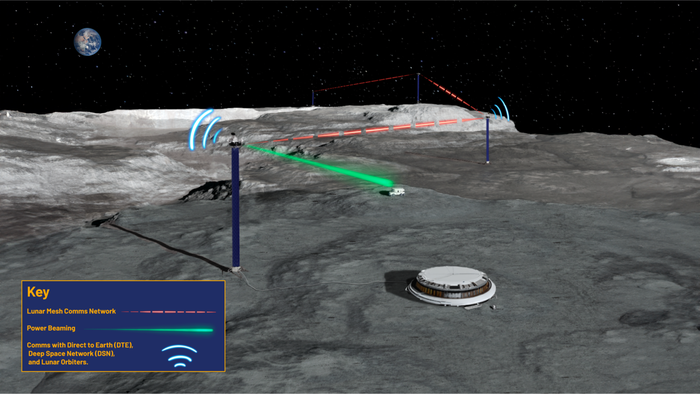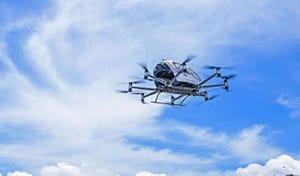Lunar ‘Lighthouses’ Could Light up Moon for Astronauts
The “lighthouses,” designed by Honeybee Robotics, would provide light, power and communications infrastructure for lunar explorers

A new project creating ‘lighthouses’ on the moon has been selected for the Defense Advanced Research Projects Agency’s (DARPA) 10-Year Lunar Architecture Capability Study, bringing it one step closer to completion.
Developed by Honeybee Robotics, the lighthouse structures would stand at nearly 330 feet tall, and combine solar power, power storage and transfer, communications, mesh network, PNT (Position, Navigation, and Timing) and surveillance into a single infrastructure.

Credit: LUNARSABER providing services to various lunar assets such
The deployable structure is called LUNARSABER (Lunar Utility Navigation with Advanced Remote Sensing and Autonomous Beaming for Energy Redistribution) and is hoped to provide the light, power and communications necessary to support a lunar economy.
“LUNARSABER can turn night into day in the deepest craters on the Moon,” said Kris Zacny, vice president of exploration systems at Honeybee Robotics. “It is truly a game-changing system that will pave the way for a prosperous lunar economy.”
Honeybee said LUNARSABER can host payloads at the base of the system to integrate other commercial services into the system, or these can be mounted at the top of the mast to “significantly increase” their service range.
“We’re looking forward to partnerships with both commercial and non-commercial customers to host payload and services that will help accelerate lunar infrastructure,” said Vishnu Sanigepalli, Principal Investigator of LUNARSABER on LunA-10.
DARPA’s LunA-10 project was established to explore and support technologies to help establish a lunar economy.
“LunA-10 will explore … technology concepts designed to move away from individual scientific efforts within isolated, self-sufficient systems and toward a series of shareable, scalable, resource-driven systems that interoperate – minimizing lunar footprint and creating monetizable services for future lunar users,” DARPA said on its website.
Earlier in December, the agency announced it had selected 14 companies for its capability study, including Blue Origin, Nokia, SpaceX and Northrop Grumman.
About the Author
You May Also Like







.jpg?width=300&auto=webp&quality=80&disable=upscale)
